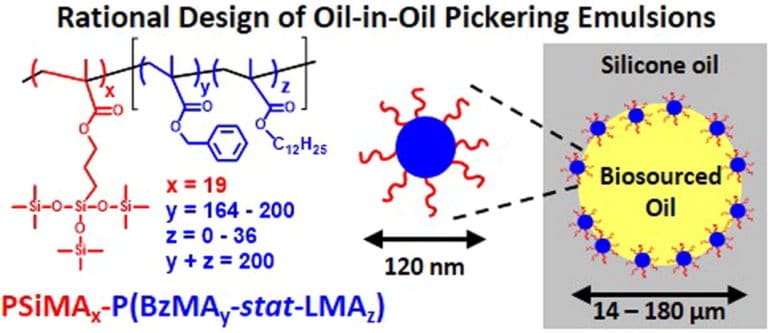159. Oil-in-Oil Pickering Emulsions Stabilized by Diblock Copolymer Nanoparticles
Matthew J. Rymaruk, Victoria J. Cunningham, Steven L. Brown, Clive N. Williams, Steven P. Armes; Journal of Colloid and Interface Science; (2020); DOI: 10.1016/j.jcis.2020.07.010
Hypothesis
Diblock copolymer nanoparticles have been shown to be Pickering emulsifiers for both oil-in-water and water-in-oil emulsions. Recently, we reported the preparation of sterically-stabilized diblock copolymer spheres in a low-viscosity silicone oil (Macromolecules 53 (2020) 1785-1794). We hypothesized that such spheres could be used as a Pickering emulsifier for a range of oil-in-oil emulsions comprising droplets of a bio-sourced oil dispersed in silicone oil.
Experiments
Diblock copolymer spheres were prepared via reversible addition-fragmentation chain transfer (RAFT) dispersion polymerization of benzyl methacrylate in silicone oil and characterized by dynamic light scattering and transmission electron microscopy. These spheres were evaluated as Pickering emulsifiers for a series of oil-in-oil Pickering emulsions. The influence of both sphere size and core-forming block composition was investigated.
Findings
Optimization of the nanoparticle size and core-forming block composition enabled stable bio-sourced oil-in-silicone emulsions to be obtained for nine out of the ten bio-sourced oils investigated. These emulsions were characterized in terms of their mean droplet size by optical microscopy.
